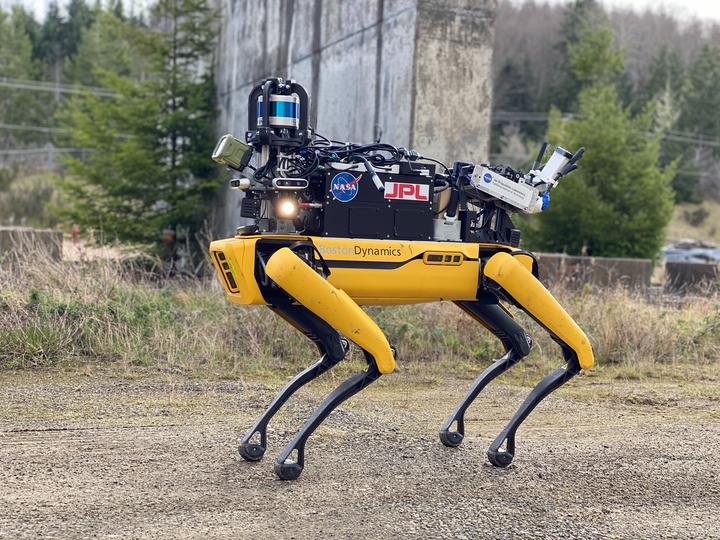Autonomous Spot: Long-range Autonomous Exploration of Extreme Environments with Legged Locomotion
 “Autonomous Spot” equipped with the “NeBula” autonomy payload
“Autonomous Spot” equipped with the “NeBula” autonomy payload
Abstract
This paper serves as one of the first efforts to enable large-scale and long-duration autonomy using the Boston Dynamics Spot robot. Motivated by exploring extreme environments, particularly those involved in the DARPA Subterranean Challenge, this paper pushes the boundaries of the state-ofpractice in enabling legged robotic systems to accomplish realworld complex missions in relevant scenarios. In particular, we discuss the behaviors and capabilities which emerge from the integration of the autonomy architecture NeBula (Networked Belief-aware Perceptual Autonomy) with next-generation mobility systems. We will discuss the hardware and software challenges, and solutions in mobility, perception, autonomy, and very briefly, wireless networking, as well as lessons learned and future directions. We demonstrate the performance of the proposed solutions on physical systems in real-world scenarios.3 The proposed solution contributed to winning 1st-place in the 2020 DARPA Subterranean Challenge, Urban Circuit.